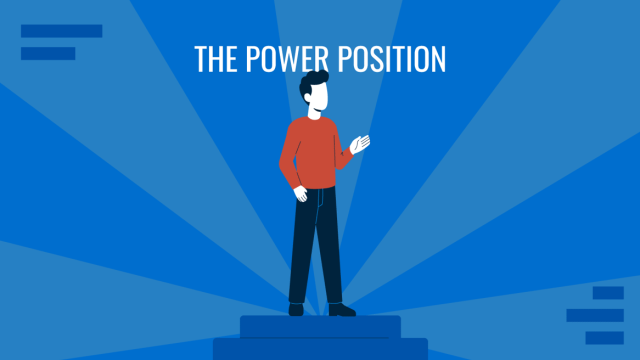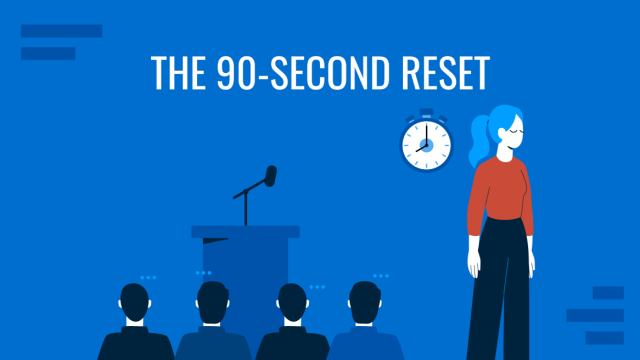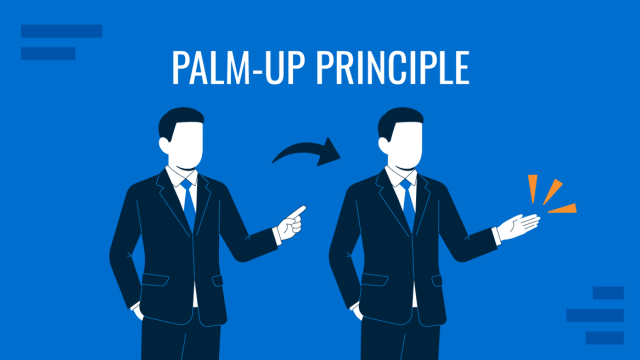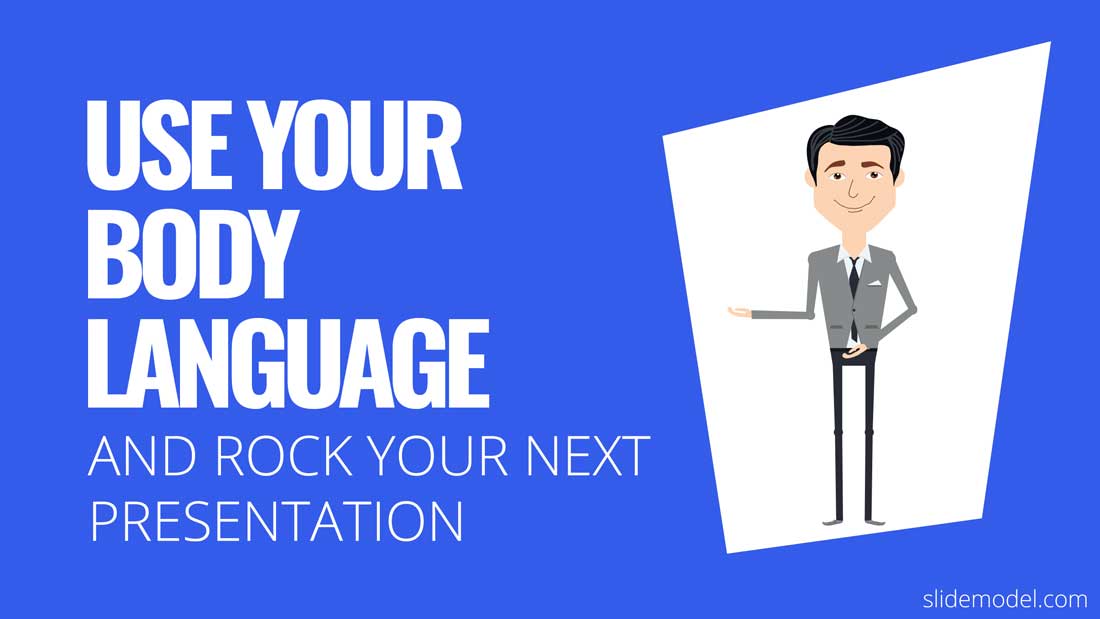
When tasked with giving a presentation to an executive audience, and you will in one way or another in business, it’s important not only to have something worth saying, but also being effective in how you communicate your ideas.
Human beings are social creatures, thus we train ourselves very early on how to understand each other not just through direct verbal messages, but through silent, subconscious, and physical ones as well. In fact, body language and your actions during a presentation actually makes a massive difference in your chances of successfully convincing your audience of your ideas.
A popularly referenced scholarly study by Albert Mehrabian in the 1950s found that only 7% of an impactful message comes from the quality of its words, whereas body language altered the effectiveness of communication by 55%. With a majority of the outcome decided through our physical actions, it’s easy to see why it’s important to not only master your message, but how you act when you spread that message.
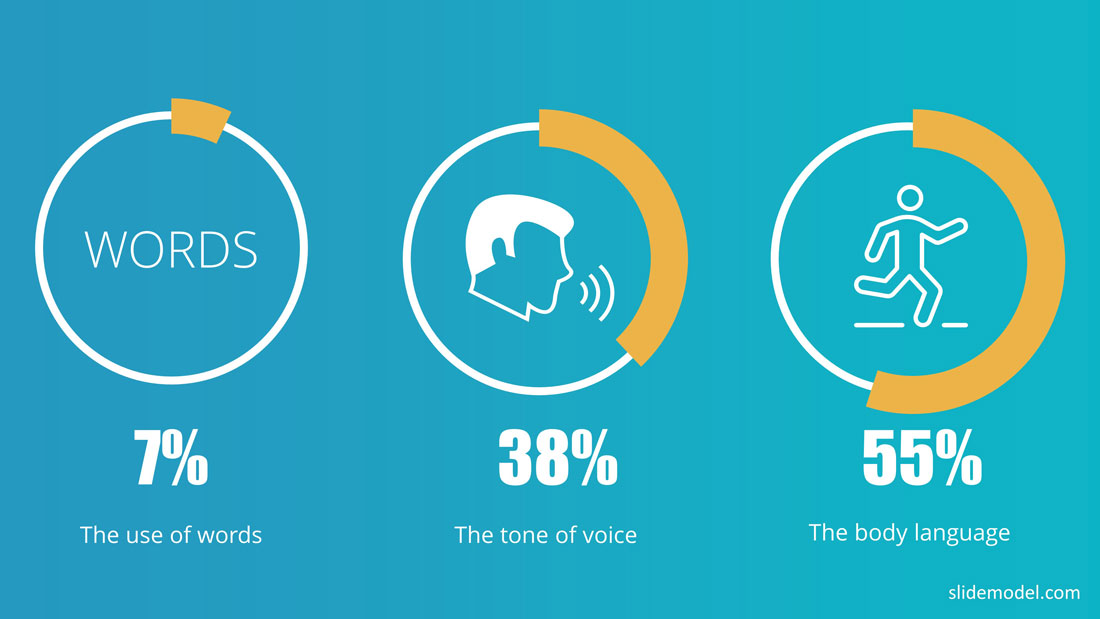
Motions that Matter Most
While body language as a whole is important, and every little action we do, from blinking to wiggling our fingers, does impact an observer at some level, there are certain parts of our body that, we as a species, have come to focus on more than others. By mastering the most impactful tools of body language, you can become both an effective communicator while also saving time. The four major pieces that impact body language are:
- Your eyes
- Your smile ( and mouth gestures in general)
- Your hands
- Your steps and your movement when you talk
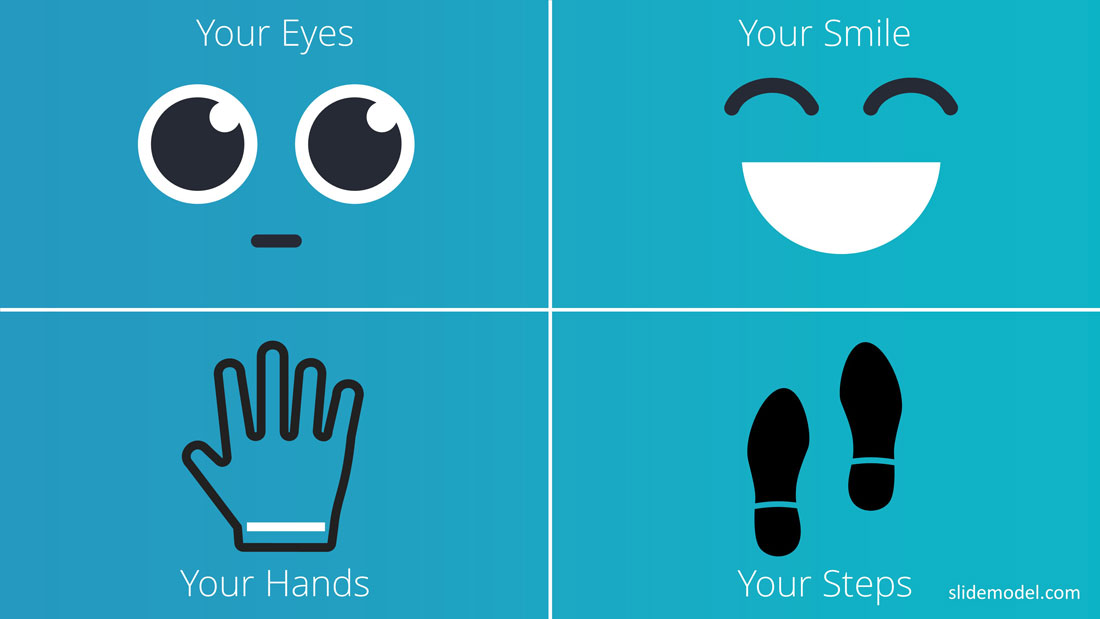
1. Eyes that Create Beauty for your Beholders
Eyes, and the region surrounding them (eyebrows, eyelids, etc.), are such a critical contributor of communication that often many of us are taught from an early age to respect their power. We are told lessons such as making eye contact when you want to demonstrate active participation in a conversation, or how looking to the side when being interrogated can represent a lie. People have naturally come to understand that our eyes tell a lot more of the story than what might be on the surface, and this translates to what people pay attention to even when they are part of a larger audience.
While you may not be able to look everyone in the eyes when giving a group presentation, there are still conscious and subconscious actions you can be aware of that will help keep your audience engaged.
- Keep your eye level directed towards the audience. Looking down at the ground, at the ceiling, out the window, or even at your own presentation means you are no longer speaking with your audience members, but rather that you’re just throwing out information with no intended receiver.
- Continue to scan the room. Looking at a single audience member or a select portion of the audience means the remaining listeners will recognize themselves to be forgotten or lesser. Even if you are glancing in the audience’s direction, our eyes take note that you want the whole room to hear your message, and not just a small selection.
- Engage other parts around your eyes. Our eye brows and our eyelids act as emphasis and enhancers to our eyes. When raising eyebrows, or widening our eyes, it shows an energy in what we are saying, and an urgency in that moment. Be careful not to overuse this tool, however, as too much emphasis waters down the power it holds in key moments.
2. Mouth Magic
While we speak and spread our message using our mouth, it’s also important to keep in mind that people are actively paying attention to how our mouth looks while we speak. Our mouth can be used to convey not only information, but emotion as well. Keep in mind that your mouth is like the gateway to your words, and you can use your gate as a tool to control the flow, shape, and direction of your message.
- Focus on your total mouth usage in order to speak more clearly and definitively. By opening your mouth wider or emphasizing tones in words, it can slow down speech, help you keep a level volume, and make your words more deliberate and clear.
- Develop a genuine smile to inspire joy, peace, and interest with your audience. A smile is one of the most universally recognized ways people notice someone worth trusting. By having a warm smile, you show that you are not only happy and excited to share your message, but that you’re excited for your specific audience to hear that message. Make sure not to force your smile though! An unnatural, forced smile is seen as fake, stiff, and aggressive. Use your passion for your project to help relax your mouth, and let your genuine desire to succeed fill you with the joy to crack a genuine grin. Opening with a smile at the start of a presentation or after a good question is a great way to display an eager personality in a discussion.
3. “Hand”-ling your Presentation with Purpose
Our hands are the versatile tools of the human body that allow us to be productive and active. Grabbing, typing, directing, shaping, our hands are so natural to our actions that we don’t have to think about most motor actions involving them on a daily basis. But this can become a problem in presentations, because our hands suddenly become a representation of our natural state of being. Hands can show stress, panic, shyness, and any other emotion that can negatively impact a presentation. Thus, mastering your hands means mastering the art of body language deception and effective message communication.
- Keep your hands in relaxed motion. Arms and hands that don’t move for a long period of time convey a message of inflexibility. By holding a position too long, people will see your body language not as natural and human, but as stiff and robotic. Keeping your hands in motion and changing to different positions helps to represent movement through your dialogue, and a relaxed internal demeanor.
- Use steepling, or bringing your fingertips from both hands together, is a method to demonstrate confidence and control. By selectively using steepling during a presentation, you can emphasis the key points you wish to convey, and show a subconscious authority of your expertise.
- Use open hands most often. Open hands refers to keeping your palms visible, and your fingers extended. Fists, or closing your hands, typically shows aggression, stress, or fear. By keeping your hands open, it demonstrates a friendly nature, and a willingness to connect with an audience member.
- Keep your physical motions reasonable. While simple hand gestures can show natural confidence and a relaxed state, wild hand motions or exaggerations will give a message with too much energy or panic.
4. Keep in Step
The final major piece to keep in mind with your body language when giving presentations has to do with where you position yourself, and how you move about the room when you speak. Even if you are a master of every other part of your body language, poor walking or pacing habits can betray your efforts and distract the audience. Train yourself to be aware of your body all the way down to your toes.
- Keep motion smooth and calm. Rapid pacing or shifting in motion is jarring, unsettling, and naturally inspires tension in people. Quick movement often represents stress or fear, instead of a calm cool demeanor. If you feel uncomfortable where you are, it’s okay to move, but do so with smooth purpose to show the audience that you are actively choosing where you want to be.
- Use motion to emphasize and de-emphasize your message, specifically forward and backwards movement. By stepping forward during a presentation, you are engaging with your audience closer, more intimately, and more directly. Use these moments to drive home a point. However, make sure you also balance this with time stepping back, to allow your audience to breathe, and not to come on too aggressively.
Mastery of Movement is Mastery of Message
By utilizing these tips, you will not only become a better presenter, but a better business leader. Whether it be a presentation in front of an executive audience, or a review with an employee, body language affects our ability to successfully achieve our goals.
Through practicing good physical habits, you will naturally train yourself to be a more confident, controlled, and professional individual in everything that you do. In mastering your body language, you are not only learning how to give better presentations, but being an effective communicator regardless of who you are speaking to, or how many people are watching.
